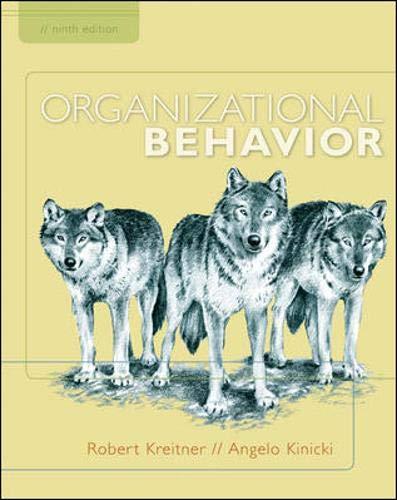In late 2006. Irdeto Holdings BV Chief Executive Graham Kill concluded his company could no longer be
Question:
In late 2006. Irdeto Holdings BV Chief Executive Graham Kill concluded his company could no longer be run from an Amsterdam suburb.
Sales at Irdeto, a unit of South American media group Naspers Ltd. that sells content-protection for pay TV and video, were growing faster in Asia, which accounted for about 39% of the company’s $170 million annual revenue. In five years, Mr. Kill expected that share to rise to half. To succeed in Asia, he thought, the company should be managed from there.
So last August, Mr. Kill moved with his family to Beijing, site of Irdeto’s principal Asian office. He declared Beijing a second headquarters and said other executives would serve multiyear stints there as well. . . .
Irdeto is one of a growing number of companies testing new corporate structures as their businesses get too complex and global to be run from one place. Some have shifted management or product-development responsibilities closer to hot markets or pools of talented workers. SAP AG, for instance, has big development centers in seven locations in addition to its original headquarters in Walldorf, Germany, including the U.S.
and India. Other companies have created multiple headquarters or dispensed with headquarters altogether.
Splitting headquarters is challenging, Mr. Kill says.
Top executives on different continents need to know what to expect of each other. Employees of the original headquarters need to be assured they’re still valuable.
Companies also need to compensate for the decline in face-to-face communication, he says; at Irdeto, that has meant frequent phone calls and bolstering technology such as videoconferencing. . . .
Last May, Mr. Kill took his top six executives on a weeklong retreat in the United Kingdom to discuss how they would manage differently. They decided to discontinue weekly face-to-face briefings on operations;
instead, they would put the updates in writing and confer once every two weeks on strategy, says Patricia van der Velden, Irdeto’s vice president for human relations.
To make it easier to communicate remotely, the company created more videoconferencing rooms and gave managers Webcams and videophone software for their laptops.
The executives also suggested Mr. Kill be less involved in operations because he would be harder to reach; top lieutenants would make more decisions on their own, says Ms. Van der Velden.
Mr. Kill and his team announced the changes to all employees a few weeks later. To reassure Amsterdambased staffers that they remained important, Mr. Kill said Irdeto would build a new office building in the Dutch city.
“When you’re communicating a possible threat to people, you have to give them something in return,” says Ms. Van der Velden.
Still, Amsterdam-based employees worried about layoffs and career advancement, Ms. Van der Velden says. They also asked whether work hours would shift earlier to better accommodate Beijing, which is seven hours ahead of Amsterdam. She told them that Irdeto didn’t plan layoffs but that career opportunities might depend on willingness to relocate to China.
Official working hours didn’t change, because that would involve re-writing contracts. But Amsterdambased workers are making more of an effort to schedule conference calls earlier in their day, during office hours in Beijing.
In Beijing, Mr. Kill is trying to get employees to make decisions as well as follow them—a new idea to many Chinese managers, says Thierry Raymaekers, who was hired in China and has headed Irdeto’s marketing there for eight years.
Questions for Discussion
1. Which of the seven organizational designs is Irdeto using? Explain your rationale.
2. Is Irdeto moving to a more mechanistic or organic structure? How can you tell?
3. Based on the contingency approach to designing organizations, which of the seven designs do you think is most appropriate for Irdeto? Discuss your rationale.
4. Why are employees in Amsterdam resisting the organizational redesign?
5. How important is the role of information technology to the success of Irdeto’s organizational redesign? Explain.
6. What is your most important takeaway from this case?
Step by Step Answer:






